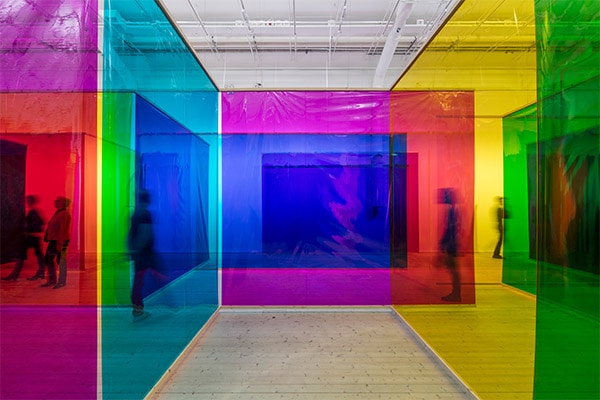

Light and Space


In the work of Minimalist artists like Donald Judd, the art object and its position in space is very much the focus. The physical form and presence of the sculptures commands the viewer’s attention.
A different interpretation of minimalism was explored by artists associated with the Light and Space movement that arose in parallel to Minimalism in the 1960s and 1970s. These artists employed a similarly stripped-down aesthetic within their work, but focused more on installation, the space of the gallery and the use of intangible elements such as light. Their interest pivoted from the art object to the personal experience of the viewer. They created immersive and radiant environments that became spaces to probe the perceptual experience of seeing. Their work showed many contemporary artists how minimalism could manifest in a non-material way, through the simple use coloured light. This is seen here in the work of Olafur Eliasson, a present-day artist-engineer of minimalist spectacle.

Photo: Anders Sune Berg

Seu corpo da obra (Your Body of Work) by Olafur Eliasson (2011)
Transparent plastic sheets, wood and spotlights
Dimensions variable
Art and science collide in the work of Olafur Eliasson. His diverse practice includes dizzying installations and sculptures that explore perceptions of light and colour. This work follows on from the Minimalist experiments of Light and Space artists such as Robert Irwin and John McCracken, who are on view at National Gallery of Singapore.
Eliasson’s work often employs elemental materials such as light and air. He concentrates on the experience of the viewer and the way that they see within a space, encouraging a deep consideration of how we inhabit the world. In this gallery, a labyrinth of translucent coloured sheets suspended from the ceiling, invites visitors to wander through different spaces experiencing layers of colour that change depending on one’s position inside the work.
Eliasson’s earlier work, Room For One Colour (1998) is on view at National Gallery of Singapore.